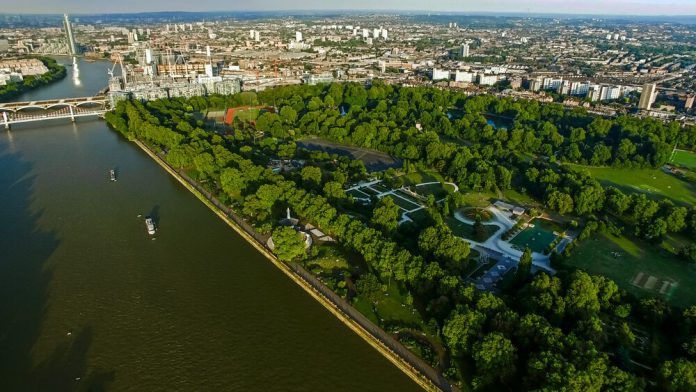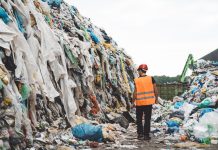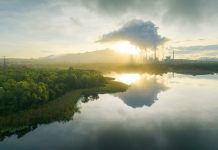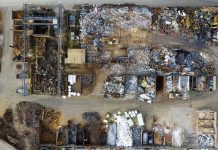Raimund Bleischwitz, Director of BSEER, explains how it could be possible to engineer a green recovery for society after the COVID-19 pandemic
Societies worldwide will not be the same after the shock of the COVID-19 pandemic. Within just a few weeks almost everyone has been affected through shutdowns related to the millions of infected people, many of whom have passed away. Additionally, key industries such as travel, tourism, and events have plummeted, and the decreasing demand for goods and services will turn into a global recession. Transformations are happening at an unprecedented speed and intensity through remote working, stress tests for social systems, and failing health policies in some countries.
A major side-effect of the responses to the pandemic, albeit an unintended one, has been a significant reduction in air pollution and greenhouse gas emissions. The lockdown in China temporarily cut down CO2 emissions by 25%, and emissions remain below normal more than two months later. Given the steady rise of emissions in previous years, who would have thought that the first half of 2020 could witness the largest ever annual fall of CO2 emissions since WWII worldwide?
COVID-19 has managed to transform our lives in the blink of an eye. It is now time to strengthen resilience, learn lessons from some changes and design a recovery. Any such recovery needs to take into account people, prosperity and the planet. It needs to be inclusive and come with a Green Deal, and not fall back into stereotypes of outdated fossil development pathways.
Deliver on priorities: Green space and biking lanes
A first set of priorities is improving access to essential systems of provision and maintaining liquidity for business and private households. Access to green space for fresh air, quiet contemplation, and exercise is proven to be beneficial for both physical and mental health. Better social equality really matters, as those living in deprived areas often have less access to green space and feel even more left behind. It is also important for families, older people and those with critical preconditions.
Funding for green space needs to increase. New initiatives such as the Nesta funded ‘Rethinking Parks’ initiative, or the Future Parks Accelerator programme in the UK, are good examples of what should become stronger in the near-term future. Planners can link those initiatives with other goals such as public health and sports, clean air, water management and flood protection. Planners need guidance through new risk assessment tools that re-evaluate green space with those co-benefits in a most positive manner. The launch of the Dasgupta Review on the Economics of Biodiversity this April should help to make this a priority worldwide and in our regions. More can be done for green space around social housing to enhance the quality of open space for communities.
Shifts to remote working have reduced traffic considerably and led cities to introduce more cycling lanes. Schemes for cyclists and pedestrians have been emerging rapidly across the globe and should be made long-term. The cities of Athens, Paris, and London are but a few examples of how public space is liberated from cars. This is now the opportunity to implement and accelerate large-scale projects like interconnected cycle highways, safe locking stations, smart renting schemes, recharging infrastructures for e-bikes and e-scooters, and extended walkways. These projects can be coupled with awareness campaigns and nudges to help people shift to an active mode of mobility. It should also be coupled with a smarter mobility for all, connecting different modes of transportation such as car sharing, public transportation and trains via smart phones and better planning. Reducing traffic levels, some say by up to 60% between now and 2030, may be key to avoiding dangerous levels of global warming. Research done in the UK CREDS project suggests smart mobility and reducing the car use is a top option for reducing carbon footprints.
We now should revalue what matters. Driven by community businesses and social entrepreneurship, a new green economy can emerge that creates goods, services and jobs in a range of areas: greenspace maintenance, sustainable mobility infrastructure, decentral and renewable energies, healthy food, and micro-finance. They take on a range of skillsets from craftsmanship to communication, from applied IT to development and engineering. This all leads to a more inclusive and sustainable development pathway for our shuttered societies.
Macro-economics of green infrastructures
A survey done at Oxford University among over 200 officials from banks and finance, and experts from G20 countries, reveals five policy packages with greatest co-benefits for the economy and climate solutions: clean physical infrastructure, building efficiency retrofits, investment in education and training, natural capital investment, and clean R&D.
As a case, building energy efficiency retrofit measures need to be dramatically upscaled. Two-thirds of Europe’s population own their homes and live there. Deep renovations happen to just 0.2% of European homes annually, and 90% of energy renovations are happening as a part of a broader home renovation, which could include local water storage tanks, access to e-mobility, and greenspace. Finance could be managed via “bundled-at-source” with stimulus funds and traditional home finance products, and distributed through all retail home finance channels available; again, this is a job machinery for a range of workers, skills training and professional development. It can be extended to council houses, suburbs and derelict areas.
At UCL BSEER we pledge for a systems approach to sustainable infrastructures to align requirements for adaptation, with future smart grids and other forms of more intelligent energy systems able to cope with a large share of renewable energies and their distribution. The nexus between energy and water infrastructures becomes more relevant in light of climate adaptation. ‘Sponge city’ initiatives help to reduce urban flood risks by increasing green spaces, restoring wetlands and using permeable materials to absorb rainwater and delay runoff. The Watersquare Benthemplein, for instance, is both an urban sports area and part of Rotterdam’s flood prevention plan. There is space for innovation through novel multi-purpose materials with low footprints, updating Environmental Product Declarations, and applying them through architecture, construction and planning. Alongside, the buried network of pipelines, cables, and hidden spaces of underground need to be mapped for future sustainable infrastructures.
Doing it now and at a scale is relevant to generate economic multipliers. That is a lesson learned from the finance crisis in 2008/9. Otherwise, actors will lose confidence, continue to hold back investments and take undesirable measures. Giving strong signals in a clear direction, in contrast, creates a momentum and feeds into mission-oriented policies (Mariana Mazzucato) that can be co-created over the next years.
The low-price level on global oil markets should be utilised to phase out environmentally harmful subsidies now and introduce carbon taxes and a broader taxation of natural resources. Locally and globally, a shift from the throw-away model to a more circular economy will create new public values for all while saving operational costs for business and guiding innovation.
*Please note: This is a commercial profile











